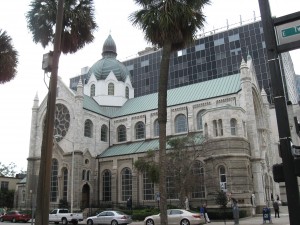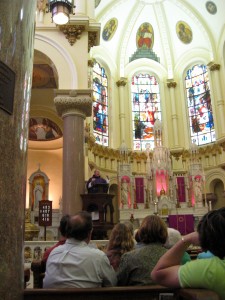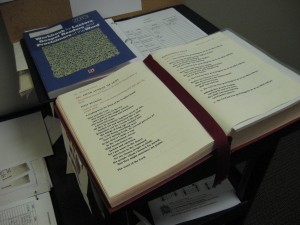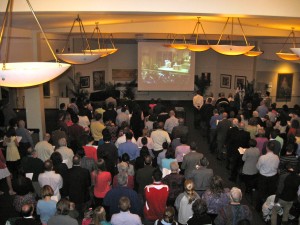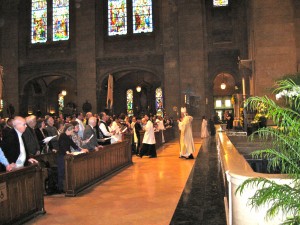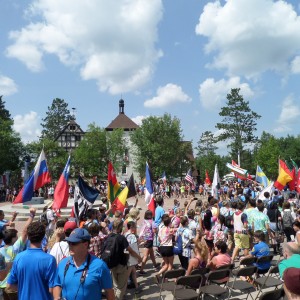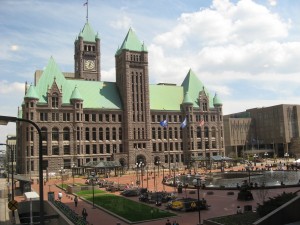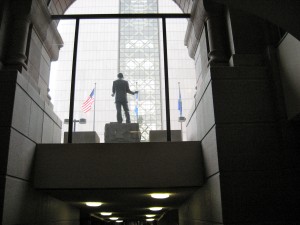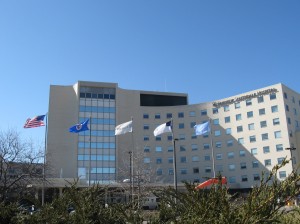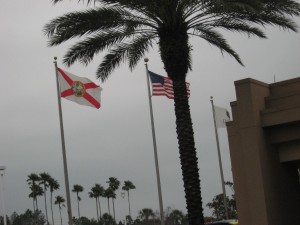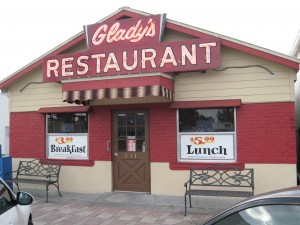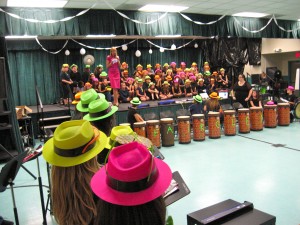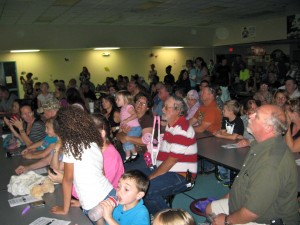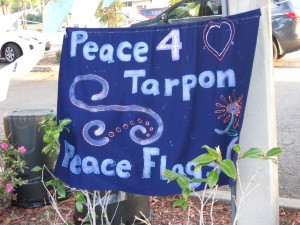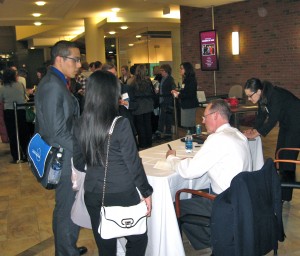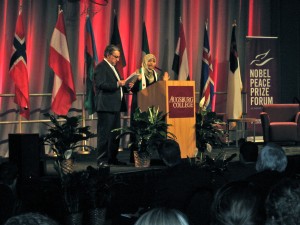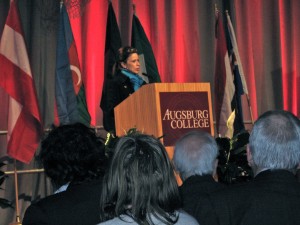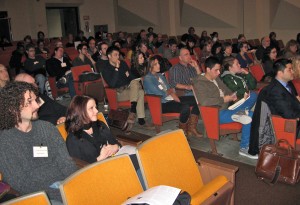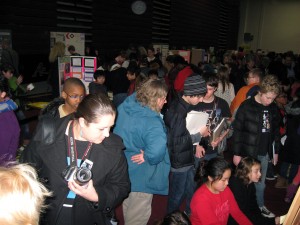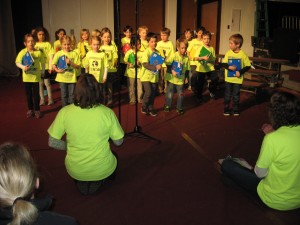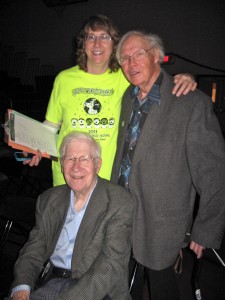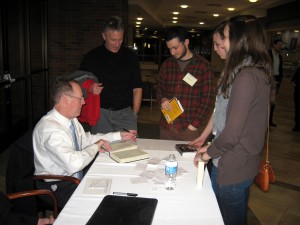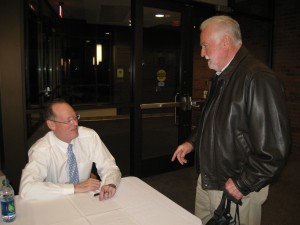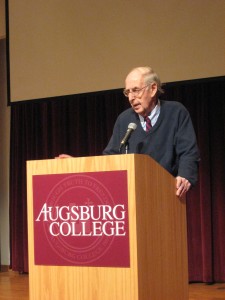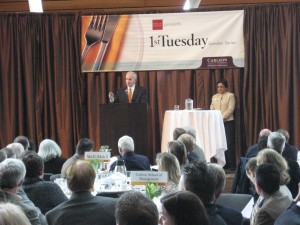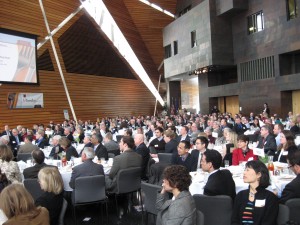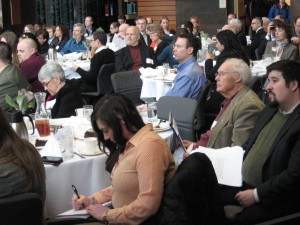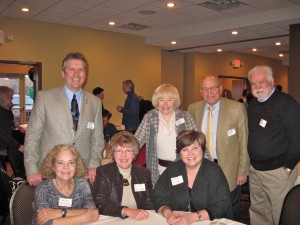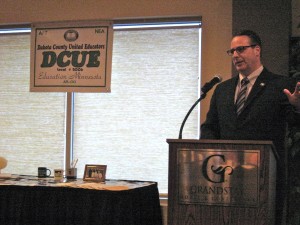This “filing cabinet” including much more background for this issue is at March 27, 2013, the link is here.
*
NOTE TO READER: This long post is an effort to convey information, and opinion, about a specific issue I wasn’t aware of, in a community other than my own: an essentially covert act by a government entity to remove a UN flag which had flown quietly with the U.S. and Minnesota flags over Hennepin County Plaza for 44 years, 1968-2012.
I was not seeking to find the issue. To some, the issue described may seem small and insignificant, and it was and remains a non-mandatory issue for the Hennepin County Board of Commissioners – they can do what they wish to do. Nonetheless, to this writer, the voluntary action described illustrates simply one example of a careless action, ignorance of history, and a (possibly) inadvertent and very negative change in tone of leadership in our civil society.
As a society, we choose our own fate through actions of leaders we freely elect. As individual citizens we either seek to change the status quo, or we sit idly by. Simply voting (which includes not bothering to vote informed, or to even vote at all) is only the first action of a responsible citizen. An accumulation of seemingly small actions can have an irreversible long term impact.
It is important to keep our leaders accountable. For Hennepin County residents here is an opportunity.
(click on all photos to enlarge them)

Flags at Woodbury Veterans Memorial near Woodbury City Hall March 2,2013
Sometimes research leads to unexpected results.
In December, 2012, I finally discovered the documents I needed to document a very important event in Minneapolis in March and May, 1968. They were in the archival records of Minneapolis Mayor Arthur Naftalin (1961-69) at the Minnesota History Center. There were many pages about the 1968 Declaration of World Citizenship of Hennepin County and the City of Minneapolis. Found in the file was Lynn Elling’s‘s history of the event, written in late May, 1968: Henn:Mpls Decl Mar 68001
These documents answered my previously unanswered questions – they were exactly what I was looking for: World Law Day May 1 1968001.
Days after my discovery, unsought and completely unexpected, came a link to an April 2012 Nick Coleman commentary about a March 27, 2012, action by the Hennepin County Board, removing the United Nations flag as one permitted to fly at the Hennepin Co. Government Center, Minneapolis. That issue instantly attracted my attention, and while I’m still searching for more facts, today, March 5, 2013, seems to be the appropriate time to bring the issue to public attention.
March 5, 1968, 45 years ago, was a significant day in the history of Minneapolis and Hennepin County. On that day the Board of Commissioners of Hennepin County, the Minneapolis City Council, and then-Minneapolis Mayor Arthur Naftalin unanimously recognized “the sovereign right of our citizens to declare that their citizenship responsibilities extend beyond our city and nation. We hereby join with other concerned people of the world in a declaration that we share in this world responsibility and that our citizens are in this sense citizens of the world. We pledge our efforts as world citizens to the establishment of permanent peace based on just world law, and to the use of world resources in the service of man and not for his destruction.”
Later, a bi-partisan who’s-who in Minnesota signed the declaration as well.
This Declaration, by “the first American community to take such action”, further requested that the Municipal Building Commission “proudly display the United Nations flag on suitable occasions at the main entrance to the City Hall and the main entrance to the new county building.”
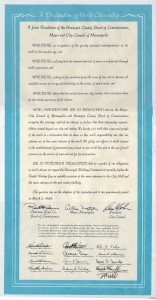
Minneapolis/Hennepin County MN Declaration of World Citizenship signed March 5, 1968, dedicated May 1, 1968
On May 1, 1968, then as now, Law Day, a large group of citizens, including at least 27 Mayors of Hennepin County communities, met at the City Hall to publicly celebrate the Declaration and publicly raise the United Nations flag alongside the American flag. A new flagpole had been raised for this purpose. In Minnesota the observance came to be known as “World Law Day”, as shown in a May 1, 1968, cartoon in the Minneapolis Star: World Law ‘toon My 1 68 001
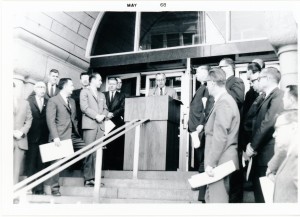
Keynote speaker May 1 1968, former Minnesota Governor Elmer L. Andersen, proudly supported the flag raising.
Among other remarks he said the raising of the United Nations flag “represents a commitment to cooperation among nations for world peace, to belief in the common brotherhood of all men of all nations, and to aspirations for a world community of peace, freedom and justice under world law.” His speech can be read here: Elmer Andersen I Trust..001
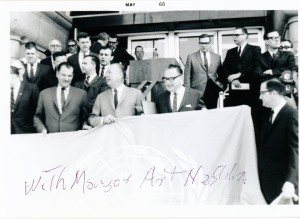
Elmer L. Andersen (center), Mayor Arthur Naftalin (right) and unidentified person with the UN flag before raising May 1, 1968
The United Nations Flag was raised on the new flagpole next to the U.S. flag, a symbol of community and non-partisan friendship with the world. Certainly, proper flag protocol was followed. The flagpole gave permanence to the word “suitable” in the earlier resolution.
That UN Flag, and many successor flags, to my knowledge, probably flew consistently until March 27, 2012, when the Hennepin County Board, quietly in the consent agenda, and likely with no public hearings or even internal debate, directed that the UN Flag be taken down permanently. The directive stated that “solely the flags of the United States, Minnesota and Hennepin County” be raised, “in compliance with the U.S. Flag Code.”
The 2012 Board Resolution is here: Henn Co Res 3:27:12001
I discovered this resolution at the end of December, 2012, and immediately took issue, as a citizen, by writing the Members of the Hennepin County Board: Bernard Ltr 12:2912001. I learned that six of the seven had been on the Board at the time of the earlier resolution; apparently four of them had voted on the resolution, all in favor.
I have received no response from any Board member which in itself is not especially surprising, since I don’t live in Hennepin County, but it nonetheless significant (see comment about Arthur Naftalin, below).
To date, the only rationale I know of, provided by the Board to a citizen of the county, is that flying the U.N. flag in some way goes against the U.S. Flag Code Section VII, Paragraph C. This statute is easily accessed on the internet. The cite from Statute seems to apply only to the U.S. flag “when carried in a procession with another flag”.
The flagpoles at City Hall were stationary, certainly by no means in “procession”. Whatever the case, the Code in question has no penalties for even egregious violations – its tenets are superseded by freedom of speech.
There is nothing illegal about the UN flag. it is a legitimate flag. The UN is headquartered in New York City, and a prime mover for the founding of the United Nations was the United States, led by people like another former Minnesota Governor Harold Stassen. The U.S. has been a dominant player at the UN since its founding. The UN is hardly an enemy nation, though it is portrayed that way by some who seem governed by fear.
There are people who just despise the United Nations, and they won on March 27, 2012. The UN flag was quietly taken down at Hennepin County Government Center.
There is no need for the issue to remain quiet.
The decision makers, the Hennepin County Board, need to hear from citizens. Only in that way will an unfortunate decision be reversed and a proud day, May 1, 1968, be once again honored.
I’d suggest that an appropriate occasion to re-fly the United Nations flag and publicly re-affirm the 1968 Declaration of World Citizenship is May 1, 2013, Law Day.
POSTNOTE:
A BIT OF HISTORY
Prime movers of the 1968 Declaration, and a later similar Declaration of the State of Minnesota, were Minneapolis businessmen Stanley Platt and Lynn Elling. Now 92, Lynn still lives in Minneapolis, and remains active. Lynn was the MC of the May 1, 1968, event, and later described the process leading to the Declaration: Henn:Mpls Decl Mar 68001
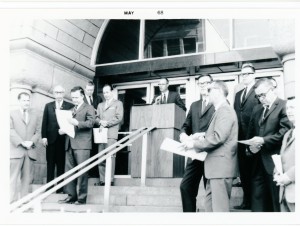
Lynn Elling at Minneapolis City Hall May 1, 1968 opening the event where Minneapolis and Hennepin County declared themselves World Citizenship Communities, joining perhaps 1000 other world communities, and where the United Nations flag flew alongside the U.S. flag.
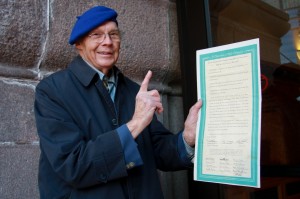
Lynn Elling with the Minneapolis Declaration at Minneapolis City Hall, Dec. 22, 2012. Photo compliments of Bonnie Fournier of the Smooch Project
In 1971, the State of Minnesota also declared itself a World Citizen. Again this was completely non-partisan. The Minneapolis Star Tribune editorial spoke to the concept of World Citizenship then.
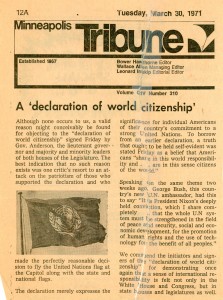
THE UNITED NATIONS FLAG DOES CONTINUE TO FLY TO THIS DAY.
Travel two miles east from the Hennepin County Government Center to Augsburg College Campus and you’ll see the United Nations flag proudly flying amongst four others, properly displayed in relation to the U.S. flag. Those attending the 25th Nobel Peace Prize Forum at Augsburg this weekend will see the flags flying, alongside I-94.
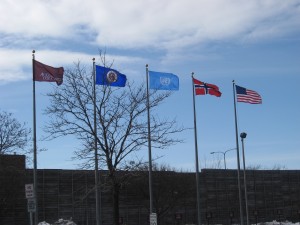
Augsburg College, Minneapolis MN, March 3, 2013. UN flag is at center
Augsburg is not unique. Minneapolitan Jim Nelson, who was at the May 1, 1968 dedication, spent his career at Honeywell, where the UN flag flew every day.
THEN AS NOW A SMALL GROUP ATTEMPTED TO BULLY DECISION MAKING.
In 1968, after the dedication, some enraged citizens demanded that the UN flag be removed. On Feb. 7, 1969, Mayor Naftalin wrote colleague Mayor Joseph Alioto of San Francisco affirming the importance of the Declaration. In relevant part, he said “we were pleased to issue our proclamation, although our action has not met with universal approval judging from some of the mail it has prompted.” [there were perhaps 15 negative letters, only three from Hennepin County citizens]. “However, I am still convinced the proclamation has much merit as a symbolic step towards world peace and I view it as being in the best interests of our city, county, state and nation.” (s) Arthur Naftalin, Mayor.
Interestingly, and in contrast to subsequent action by the members of the 2012-13 Hennepin County Board, Mayor Naftalin wrote individual and respectful acknowledgement letters to every one of those who complained about the Declaration of World Citizenship, regardless of where they were from, or how abusive the tone of their letter (and there were some “hum-dingers”). (I have copied the entirety of the relevant files).
Mayor Naftalin was connected with the greater world; he recognized he was more than leader of just a major city, but himself a World Citizen. I wonder about today’s Hennepin County Board.
WHY I FEEL THE FLAG ISSUE IS AN IMPORTANT ONE.
Perhaps like most people, I do not customarily notice flags, their placement, etc.
This incident has caused me to look more closely at flags I see displayed.
The photo at the beginning of this post is from Woodbury, my home, and in that setting the U.S. flag is set considerably above all of the other flags (primarily military banners – Army, etc.) One might call the Woodbury display a “War Memorial”.
At Augsburg, on the other hand, the flags are in compliance with the Code, but at equal height, neither subordinate nor superior. They more befit the theme of “Peace” within and among nations. There is an entirely different tone.
There are notes of irony, for instance: doubtless there are “State’s Rights” people who might logically demand that their State flag be set higher than the national banner, while at the same time demanding that only the U.S. flag be revered.
Emotion too often trumps reason.
The flag debate is a debate about the tone of our society. How we see ourselves as compared with others.
This is an important question to be considered and discussed.
*
Questions? Information that you know that would help further enlighten myself or others on the issue?
Send to
Dick Bernard
dick.bernardATiCloud.com
or
6905 Romeo Road
Woodbury MN 55125-2421
NOTES
NOTE February 14, 2016: For the past three years the Hennepin County Commissioners, most of whom were on the Commission at the time of the official action March 27, 2012, on many occasions have refused to give an honest answer about why they took down the flag (Note: it had nothing to do with their consistent narrative: legality.)
UPDATE: March 6, 2013: This post was reposted in MinnPost on March 5. A comment there notes a very slight error on my part in describing the location of the Woodbury Veterans Memorial. That error has been corrected below. I am in close proximity to that Memorial every day, and, in fact, am a member of the local American Legion Post involved in the development.
Re Hennepin County, Mr. Elling indicated yesterday that a group of citizens raised $6,000 in 1968 to purchase the flagpoles for the U.S. and United Nations flags at Minneapolis City Hall. This was serious money back then.
The Twin Cities Daily Planet has now also picked up this post.
Questions? Scroll to very end of this post for my contact information. I’ll try to answer.

